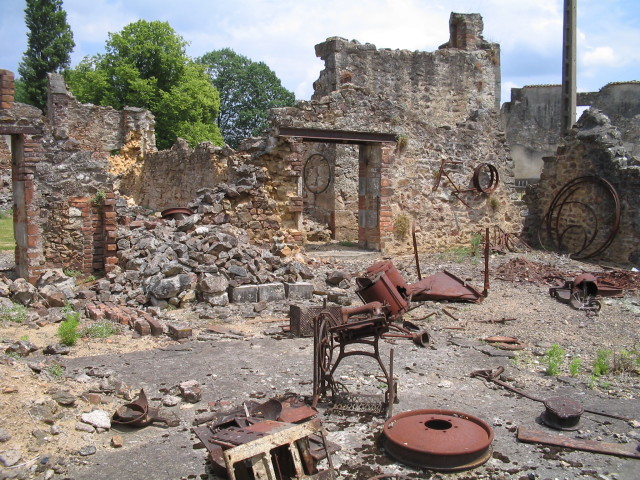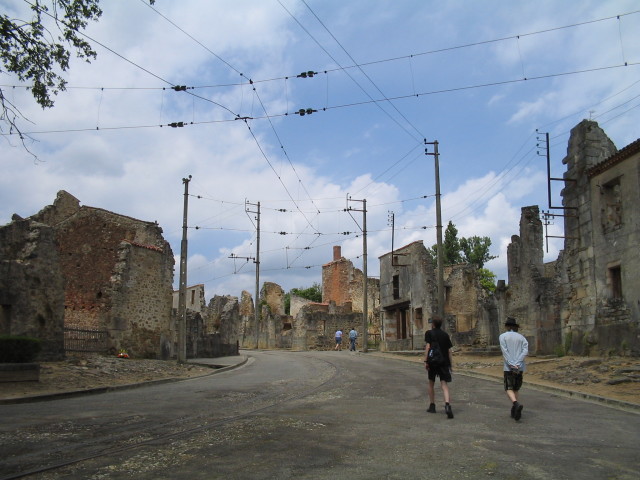On June 10th, 1944, SS Major Adolf Diekmann and his 4th SS Regiment marched to the village of Oradour-Sur-Glane, surrounded it, and ordered every resident and a few passers-by to gather in the village square to have their identity papers checked.
School children, all in class, heard a few bursts of rifle fire before SS soldiers came in and rounded them and their teachers up to be taken to the square.
The villagers were then separated. The women and children were shuttled into the church, and the men were taken to several barns on the edge of town. With hindsight, most people know that this is when things get bad. For the residents of Orad-Sur-Glane, this might very well have been the first time they did.

In the small, rural communities of Southern France, the effects of the occupation were far less obvious than in the big cities like Paris: Few soldiers had been harassing them, there was still food in plenty, and in many ways, life was still much as it had been before the war. One change, however, was the dozens of people who came to the village as refugees.
Several would have been Jewish, seeking to hide from the persecution of the Holocaust. Many had been evacuated by the French government from Alsace. Because many of the Alsatians spoke German, they were distrusted and mocked by some locals who would often call them “les ya-ya” (referencing the German “Ja” meaning “yes”).
Now, locals and refugees alike stood in large groups and had precious few moments left before the cruelty of the SS was unleashed upon them.
According to some of the few survivors, the SS soldiers sprayed the legs of the men with bullets after they were gathered into the barns. Then, as the Frenchmen lay there unable to move, the Germans either finished them with rifles or doused them with fuel and set them on fire. Six were able to escape this nightmare death, one of whom was shot later as he limped down the road.
Over in the church, two SS soldiers carried a large box through the sanctuary and placed it on the alter, leading fuses away from it. When it was lit, black smoke roared out, choking the women and children in the church. Then, the front doors were reopened and machine-gun fire pelted those who stood among the pews. The SS soldiers quickly placed flammable material around the bodies and lit a fire. Only one person survived the bloodshed in this church.
Marguerite Rouffanche, aged 47, spotted the stool behind the altar where she crouched in fear, trying to find breathable air. She used it to help heave herself out the window. She dropped about three meters, followed by another woman and her infant child. As they all landed outside of the window, they were shot where they stood. Though her neighbors lay dead, Rouffanche was only wounded and managed to find cover in nearby rows of peas, where she hid until morning.
Before leaving, the Germans looted and torched the village.
SS Major Adolf Diekmann of the 4th SS Panzergrenadier Regiment slaughtered almost every living soul they found in the French village of Oradour-Sur-Glane that day: 190 men, 247 women, and 205 children were dead in a matter of hours.
After the war, French President Charles de Gaulle ordered that the village not be restored, but instead remain a memorial to those who were murdered. In 1999, a museum, containing personal effects and items found in the burned down structures, was also dedicated to the Village Martyr, the Martyred Village, Oradour-Sur-Glane.
Video
This drone footage shows the destruction wrought upon the village by the SS. Not a house was left standing and the memorial serves as a poignant reminder of the villagers whose lives ended so brutally.

